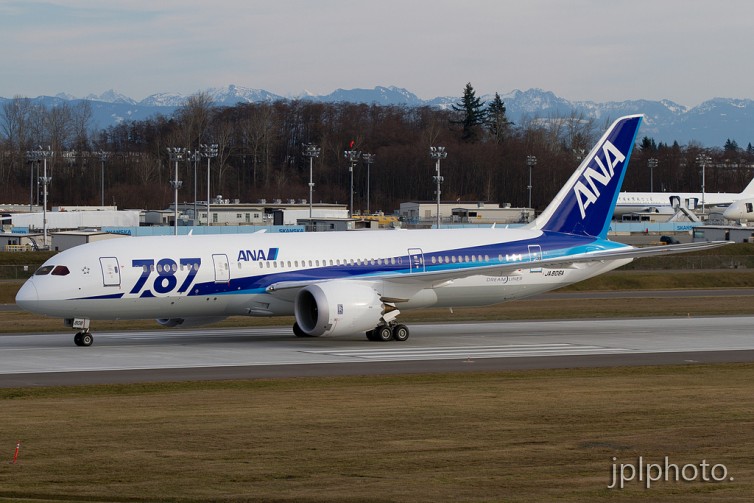When two AirlineReporter writers decide to go on a weekend guys trip, the possibilities are endless. The thing is – we don’t mind long flights, crazy routing, or extended layovers – after all, that’s all part of the adventure.
It’s amazing how much ground you can cover in a few days, if you really want to. Once we made the decision to go somewhere, Associate Editor, Blaine Nickeson, and I spent a few weeks scouring the internet for decent airfares. We considered various destinations across five continents. Finally, something really interesting (and cheap!) popped up: Denver to Tokyo on United’s 787-8 connecting on to Kuala Lumpur, Malaysia on ANA’s 787-8.
One stop from Denver to a city nearly on the other side of the world? Oh yeah, this is the kind of stuff the Dreamliner was built for.
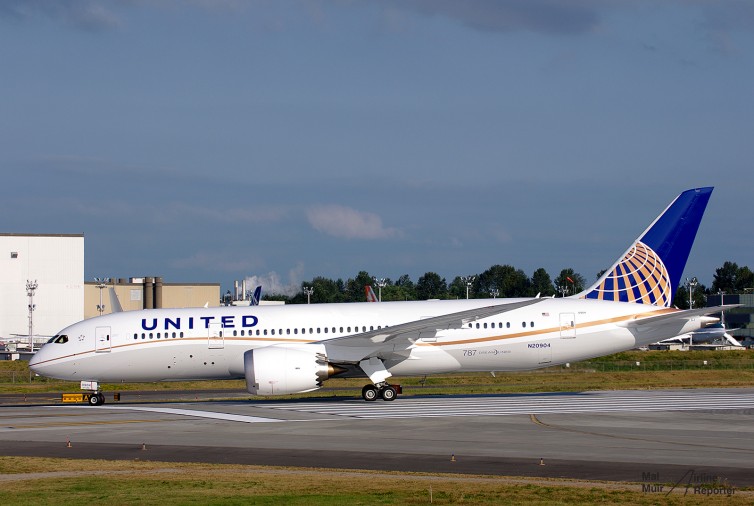
United Airlines’ first 787 at Paine Field – Photo: Mal Muir | AirlineReporter
THIS is the route that the Boeing 787 Dreamliner was built for. Flying between Tokyo and Denver, you need a special kind of aircraft. Something that is super-efficient, able to deal with Denver’s high altitude and summer heat, and right-sized for the market. The 787-8 checks all of those boxes.
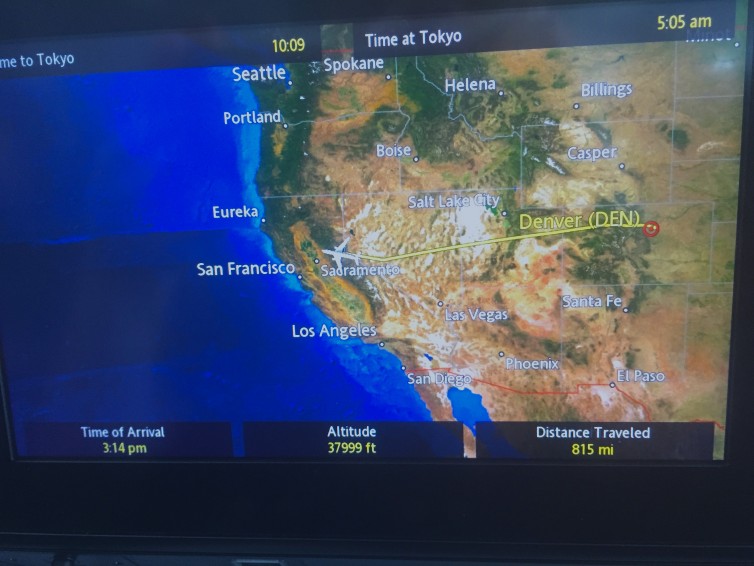
Luckily, the 787 has the legs for some wonky routings from Denver due to winds – Photo: Blaine Nickeson | AirlineReporter
Recently, I planned a trip with friend (and fellow Denver-based AirlineReporter writer), Dave Delagarza. Our wives were not thrilled to care for the young kids during the trip, but we’d be gone for less than 72 hours. In that period of time, we flew nearly 20,000 miles to Kuala Lumpur, Malaysia and back, all on 787-8s (of both the United and ANA variety). This helped us both re-qualify for our elite status levels with United, our dominant carrier here in Denver.
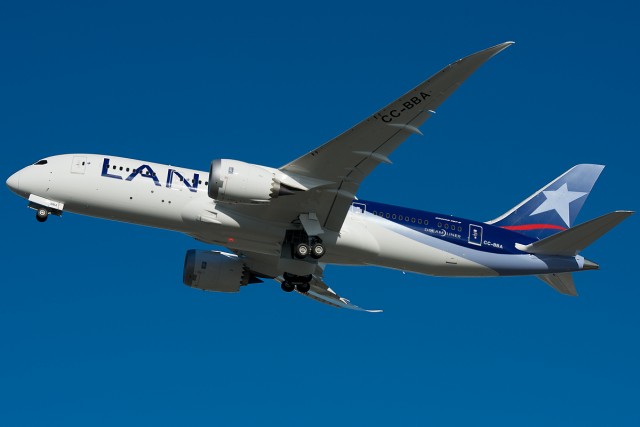
LAN 787-8 Dreamliner at takeoff – Photo: Bernie Leighton | AirlineReporter
Recently, LAN Airlines invited me down to their headquarters in Santiago de Chile, Chile, to check out their new Boeing 787-9 Dreamliner. While LAN was the first carrier in the Americas to operate the 787-8, the new stretched 787-9 offers an all-new Premium Business hard product. Unfortunately, at the last minute, the special event was called off due to “operational issues.”
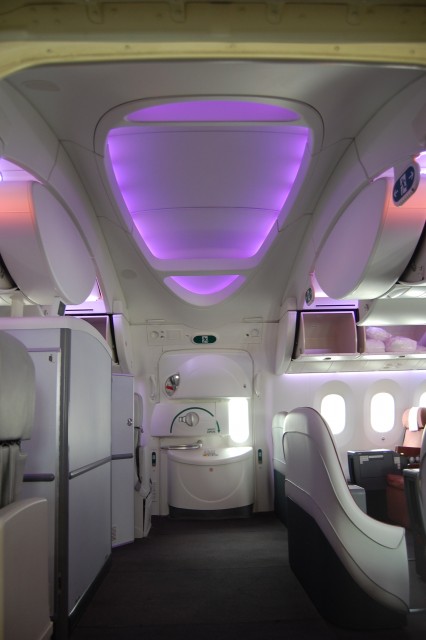
Dreamliner signature entryway on LAN’s 787-8 – Photo: Blaine Nickeson | AirlineReporter
Since flights to Santiago had already been arranged I decided to still make the trip, which would give me a chance to experience LAN’s 787-8 Premium Business class, check out Santiago briefly, and also take a look at the airport experience on both ends. All-in, I’d only be gone from home in Denver for 55 hours – not too shabby for 13,000 miles of travel.
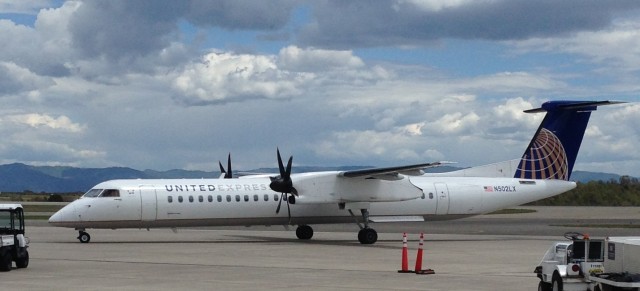
United Bombardier Dash 8 Q400 at Durango – Photo: Blaine Nickeson | AirlineReporter
As a Silver Premier member with United Airlines (their lowest-level elite tier), getting a complementary first class upgrade happens almost as rarely as spotting a unicorn. In a year and a half of being an elite, I’ve gotten two first class upgrades. Recently, upgrade number two came in an unlikely form; on a Bombardier Dash 8 Q400.
That’s right, folks – United is offering a first class cabin on planes with propellers. I caught my upgrade on a quick business trip from Denver (DEN) to Durango (DRO), Colorado.
All of United’s Q400s are actually operated by Republic Airlines, one of many regional carriers for UA. They are configured with 71 seats; seven in first class, 10 in Economy Plus, and 54 in economy. As to be expected on a regional plane, “first class” really only meant a wider seat, more legroom, and a free beer. Well, we got some pretzels too.
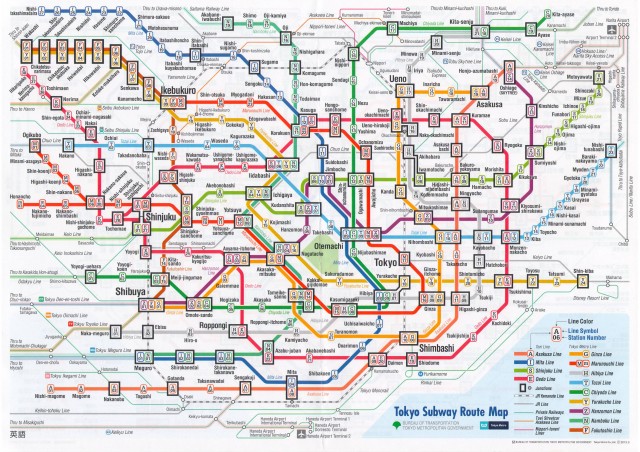
Daunting, isn’t it? 40 million passengers a day use the Tokyo transit system. Image: Tokyo Metro
This is a bit of a different post for us, about something other than just airplanes, airports & airlines. Enjoy!
It was early Thursday morning on my last day in Tokyo. It had been a whirlwind trip. Sunday and Monday had been taken up on the inaugural All Nippon Airways (ANA) flight from Vancouver (YVR) to Tokyo-Haneda (HND). I spent Tuesday at ANA’s New Employee Ceremony, and then explored HND’s observation decks. On Wednesday morning I was treated to a somewhat manic half-day bus tour of Tokyo. After that, I explored a bit, and went back to my hotel at HND’s Terminal 2 to get some work done, and to recover!
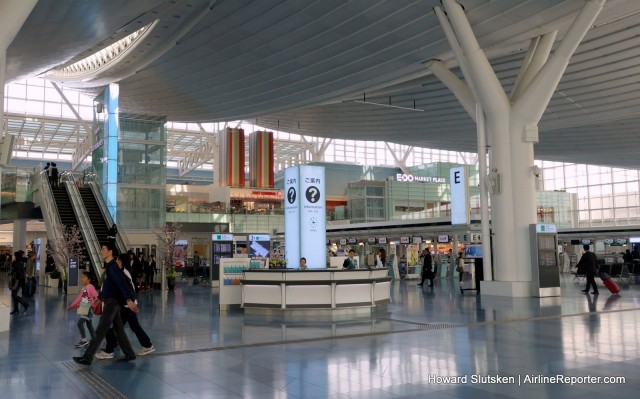
My start and end point – HND’s International Terminal
But now, I had the whole day to explore the city before returning to Haneda Airport’s International Terminal for my 9:55 pm flight. I had a long list of suggestions of things to see from friends and colleagues. Everyone had said that the best way to explore Tokyo is by transit, and I had my maps ready to go.
The statistics are phenomenal; 40 million passengers use Tokyo’s transit system, every day. Most commuters travel on Tokyo’s extensive urban railway system, and eight million use the Tokyo Metro (subway) daily. There are over 130 lines and 1,000 stations on the fully-integrated rail system. No surprise, then, that the world’s busiest train station is in Tokyo, at Shinjuku Station, with over three million passengers per day. The entire system is clean, efficient, inexpensive, and operates exactly on time, all the time.
However, there are a few things that an explorer needs to master before venturing out.
